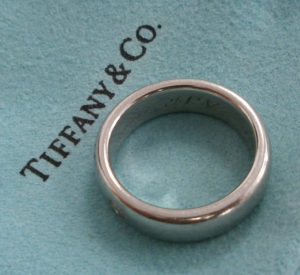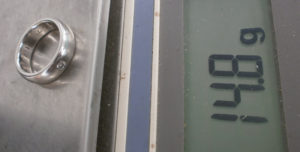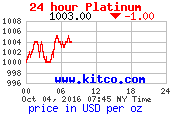Platinum
Platinum Jewelry

-
What is Platinum
-
Platinum Metallurgy
-
White Gold Fineness
-
Platinum TESTING
This article explains what is platinum from the point of view of the gold buyer. As a gold buyer, I focus on what I will be able to extract from the platinum-based alloy items I buy. For those interested beyond this, there are plenty of much more detailed articles.
What is Platinum
Platinum is chemical element 78, symbol PT in the Periodic Table. Platinum is very dense (heavy), highly unreactive, and super ductile and malleable. The hue of platinum is “silverish – white”. Platinum is much more rare than gold. It is used in industry, jewelry and as investment grade bullion.
Most modern production platinum comes from mines in South Africa. Canada, Rusia, and the United States also have deposits and mines. Most platinum mined comes out in the form of minerals that need to be processed and then refined. However, alluvial platinum exists, and that is how the metal was discovered, but there is not much of it. Most alluvial platinum was found in Colombia.

Platinum Metallurgy
Other than in bullion form, platinum items are almost never pure platinum. Rather they are made of a high platinum bearing alloy.
In jewelry, the most common metal alloyed with platinum is iridium. This is also true for many industrial uses, such as in sensors. However, in industry, platinum-based alloys are developed for performance rather than looks. Thus, industrial platinum-based alloys are developed for specific jobs.
Platinum, in addition to being highly malleable, ductile and corrosion resistant, it also melts at super high temperatures. High-temperature furnaces for melting metals, such as titanium, most often have sensors with platinum-based alloy wiring.
Fineness Fineness
Other than in bullion form, “platinum” items are almost always really platinum-based alloys.
Most modern American and European jewelry is 90% to 95% pure. A good example of this is the Tiffany & Co. shown above. That ring is stamped “Plat 950”, meaning 950 parts out of 1,000 parts are platinum.
Modern Japanese and other Asian jewelry tend to be 85% pure. The most likely reason that in Japan platinum chains are fashionable, probably 85% platinum metal is more adequate for that. I have bought a few beautifully crafted Japanese platinum chains. Given the amount of effort needed to manufacture such objects, there are not much savings by lowering the platinum fine content of the items. However, maybe taxation is an issue at over 85% platinum fineness.
Older, filigree type platinum jewelry, American and European, tend to be of around 75% fineness. I don’t know the exact reason for using 75%. Most likely it has to do with the task of crafting such complex items, rather than in saving.
Testing Platinum
From the point of view of a gold buyer, the most relevant gold test is the electronic test. It this type of test platinum tends to test closely in result to 18K white gold. When I test platinum with either of my Tri-Electronics testers, the typical result is “18K White Gold” or “Platinum”. There is no indication of fineness.
If an item is not stamped “Plat”, “Plat 90”, “Plat 950”, or some such thing, but I think the metal is a platinum-based alloy, I proceed as follows. First, I get a very good feel of what the materials feel like. I deal with precious metals every day, so that helps. For instance, a platinum ring is very heavy. See image above. Then, I test with the mentioned electronic tester. If that is good, then I test chemically with JSP Platinum Testing Solution. Platinum should not react to anything. If there is any reaction, the item is not platinum. If further testing is needed, I get it tested at the refinery office.
In summary, platinum is a very dense, ductile, malleable and corrosion resistant precious metal with silverish-white tone. Platinum is much more rare than gold, it is used in industry, jewelry and investing.
Resources


![[Most Recent Quotes from www.kitco.com]](http://www.kitconet.com/charts/metals/gold/t24_au_en_usoz_2.gif)
![[Most Recent Quotes from www.kitco.com]](http://www.kitconet.com/charts/metals/silver/t24_ag_en_usoz_2.gif)
![[Most Recent Quotes from www.kitco.com]](http://www.kitconet.com/charts/metals/platinum/t24_pt_en_usoz_2.gif)










